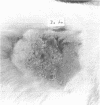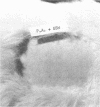Abstract
About 10% of 346 Penicillium cultures isolated from mold-fermented sausage synthesized the toxic metabolite penicillic acid on liquid media. Five of these producing cultures inoculated onto sausage failed to produce this toxin in up to 70 days of ripening. Several amino acids normally occurring in meat (cysteine, glutathione, arginine, histidine, and lysine) were found capable of readily reacting with penicillic acid. The adducts formed by the reaction between cysteine or glutathione with penicillic acid were identified and found to be non-toxic to mice, quails, and in the rabbit skin test but exhibited toxicity to the chick embryo. Hypotheses accounting for this residual toxicity are advanced.
Full text
PDF
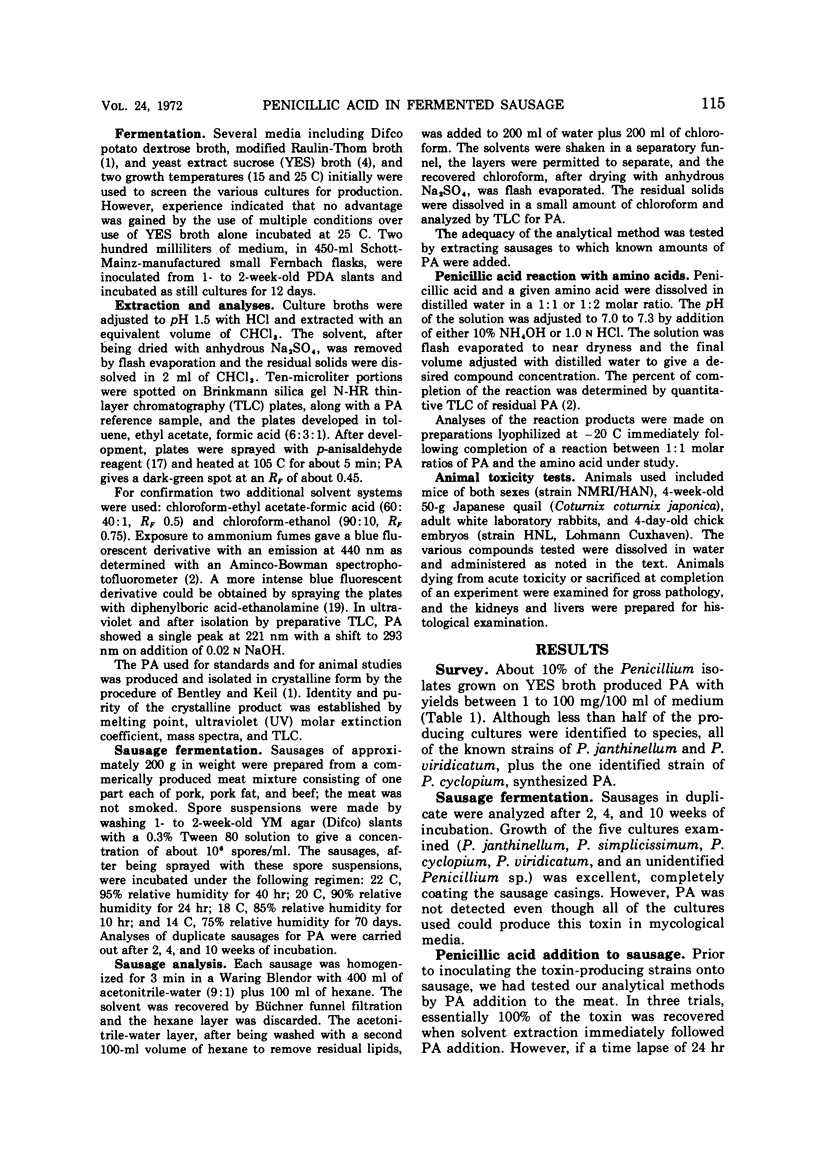
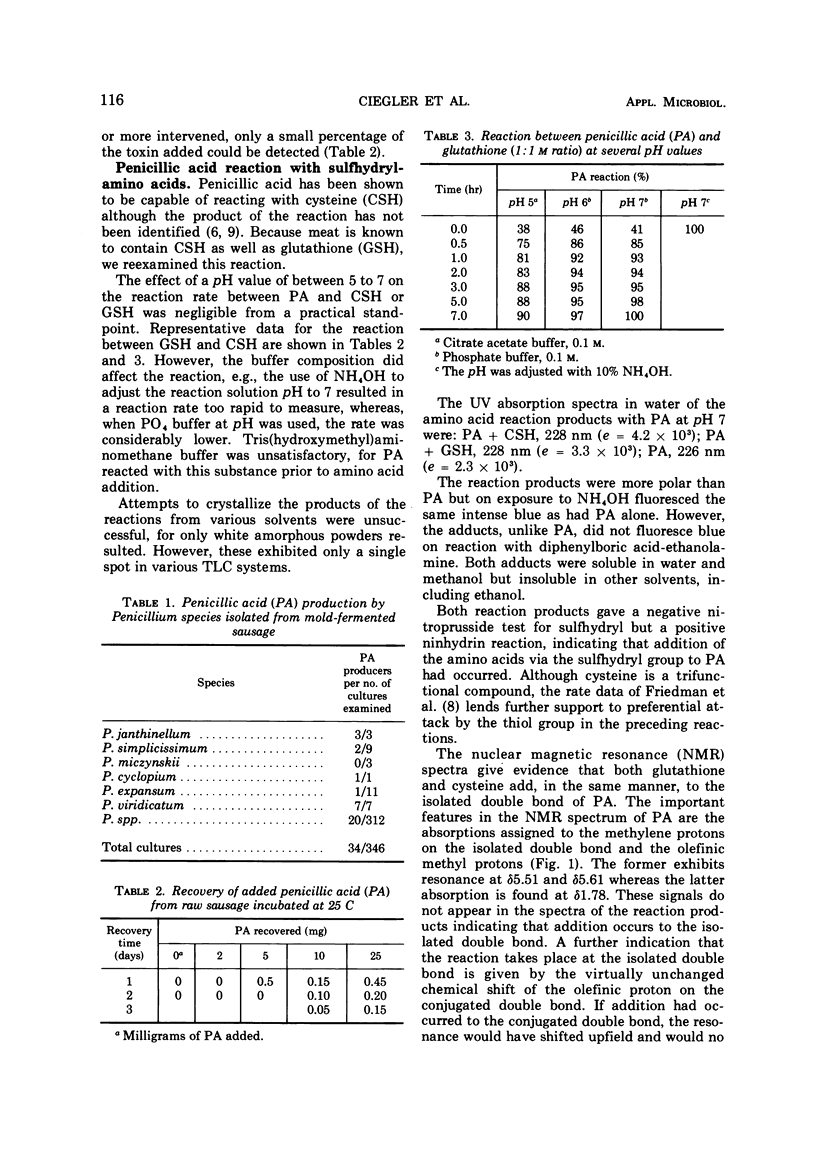
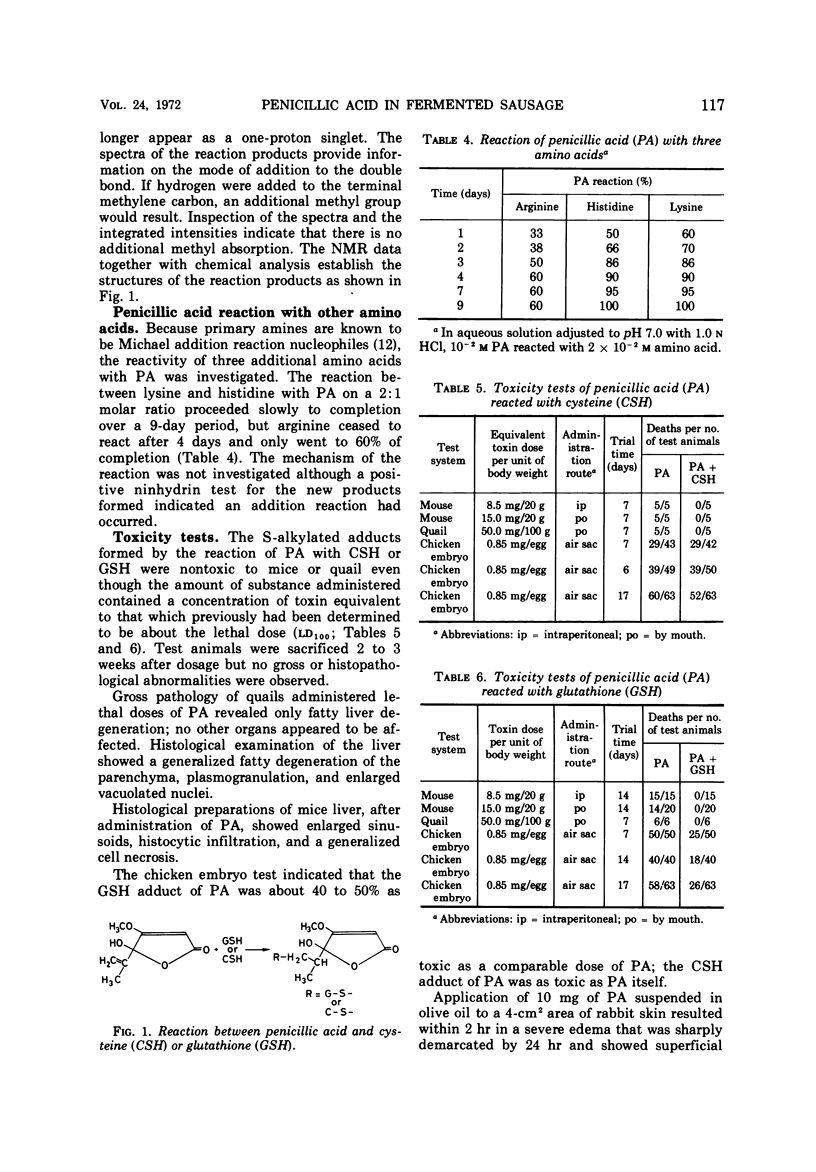
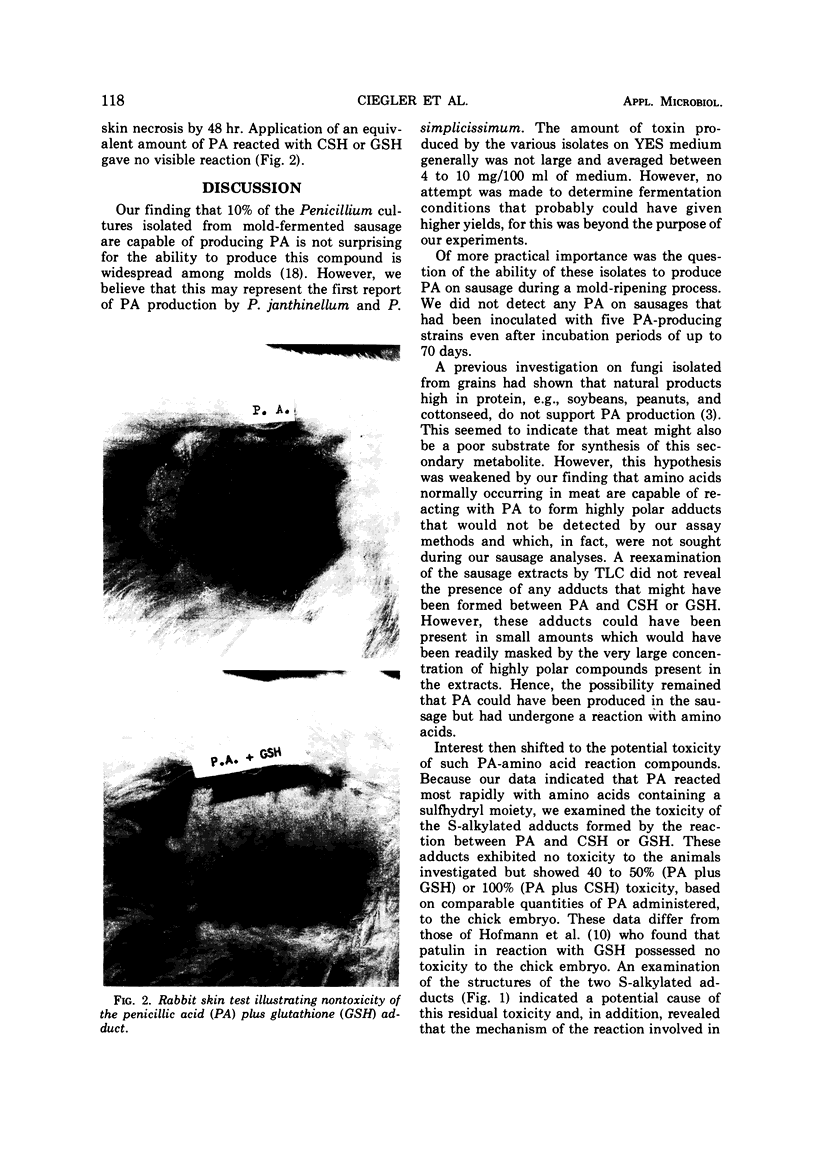
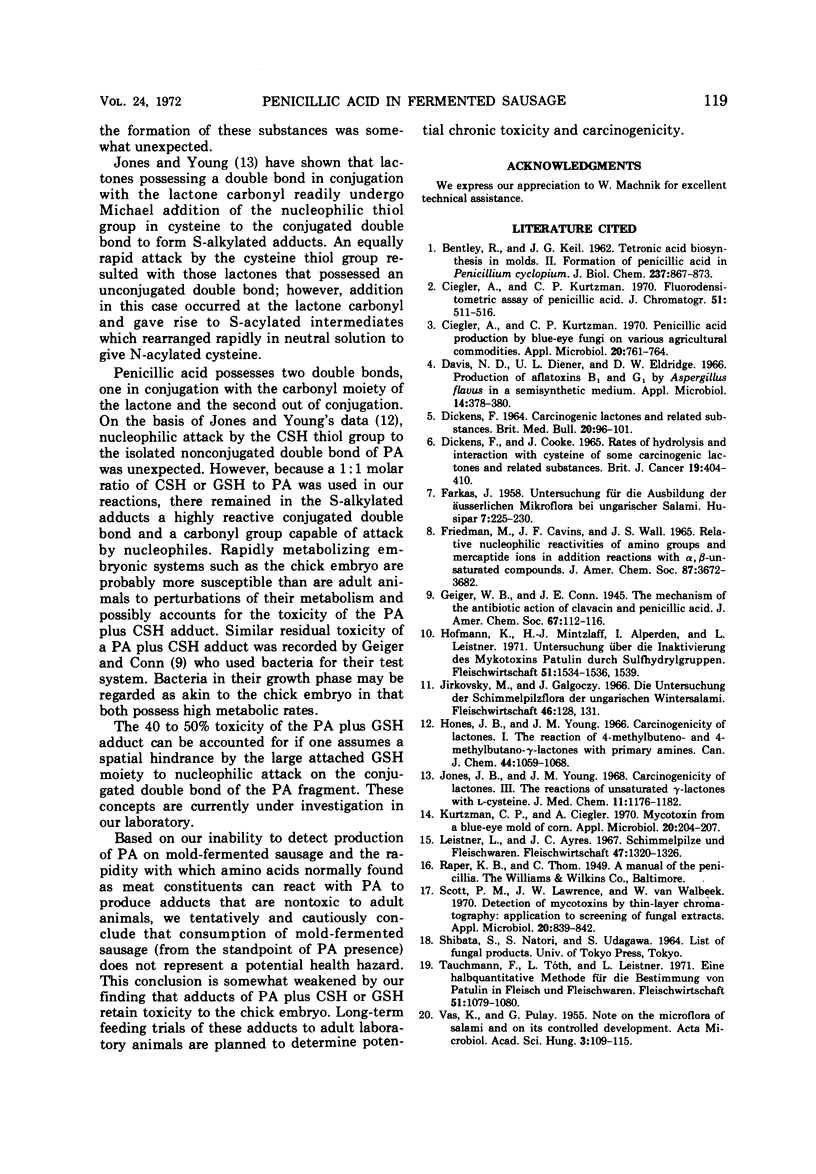
Images in this article
Selected References
These references are in PubMed. This may not be the complete list of references from this article.
- BENTLEY R., KEIL J. G. Tetronic acid biosynthesis in molds. II. Formation of penicillic acid in Penicillium cyclopium. J Biol Chem. 1962 Mar;237:867–873. [PubMed] [Google Scholar]
- Ciegler A., Kurtzman C. P. Fluorodensitometric assay of penicillic acid. J Chromatogr. 1970 Sep 23;51(3):511–516. doi: 10.1016/s0021-9673(01)96898-0. [DOI] [PubMed] [Google Scholar]
- Ciegler A., Kurtzman C. P. Penicillic acid production by blue-eye fungi on various agricultural commodities. Appl Microbiol. 1970 Nov;20(5):761–764. doi: 10.1128/am.20.5.761-764.1970. [DOI] [PMC free article] [PubMed] [Google Scholar]
- DICKENS F. CARCINOGENIC LACTONES AND RELATED SUBSTANCES. Br Med Bull. 1964 May;20:96–101. doi: 10.1093/oxfordjournals.bmb.a070324. [DOI] [PubMed] [Google Scholar]
- DICKENS F., COOKE J. RATES OF HYDROLYSIS AND INTERACTION WITH CYSTEINE OF SOME CARCINOGENIC LACTONES AND RELATED SUBSTANCES. Br J Cancer. 1965 Jun;19:404–410. doi: 10.1038/bjc.1965.48. [DOI] [PMC free article] [PubMed] [Google Scholar]
- Davis N. D., Diener U. L., Eldridge D. W. Production of aflatoxins B1 and G1 by Aspergillus flavus in a semisynthetic medium. Appl Microbiol. 1966 May;14(3):378–380. doi: 10.1128/am.14.3.378-380.1966. [DOI] [PMC free article] [PubMed] [Google Scholar]
- Jones J. B., Young J. M. Carcinogenicity of lactones. 3. The reactions of unsaturated gamma-lactones with L-cysteine. J Med Chem. 1968 Nov;11(6):1176–1182. doi: 10.1021/jm00312a017. [DOI] [PubMed] [Google Scholar]
- Kurtzman C. P., Ciegler A. Mycotoxin from a blue-eye mold of corn. Appl Microbiol. 1970 Aug;20(2):204–207. doi: 10.1128/am.20.2.204-207.1970. [DOI] [PMC free article] [PubMed] [Google Scholar]
- Scott P. M., Lawrence J. W., van Walbeek W. Detection of mycotoxins by thin-layer chromatography: application to screening of fungal extracts. Appl Microbiol. 1970 Nov;20(5):839–842. doi: 10.1128/am.20.5.839-842.1970. [DOI] [PMC free article] [PubMed] [Google Scholar]
- VAS K., PULAY G. Notes on the microflora of salami and on its controlled development. Acta Microbiol Acad Sci Hung. 1955;3(1-2):109–115. [PubMed] [Google Scholar]



